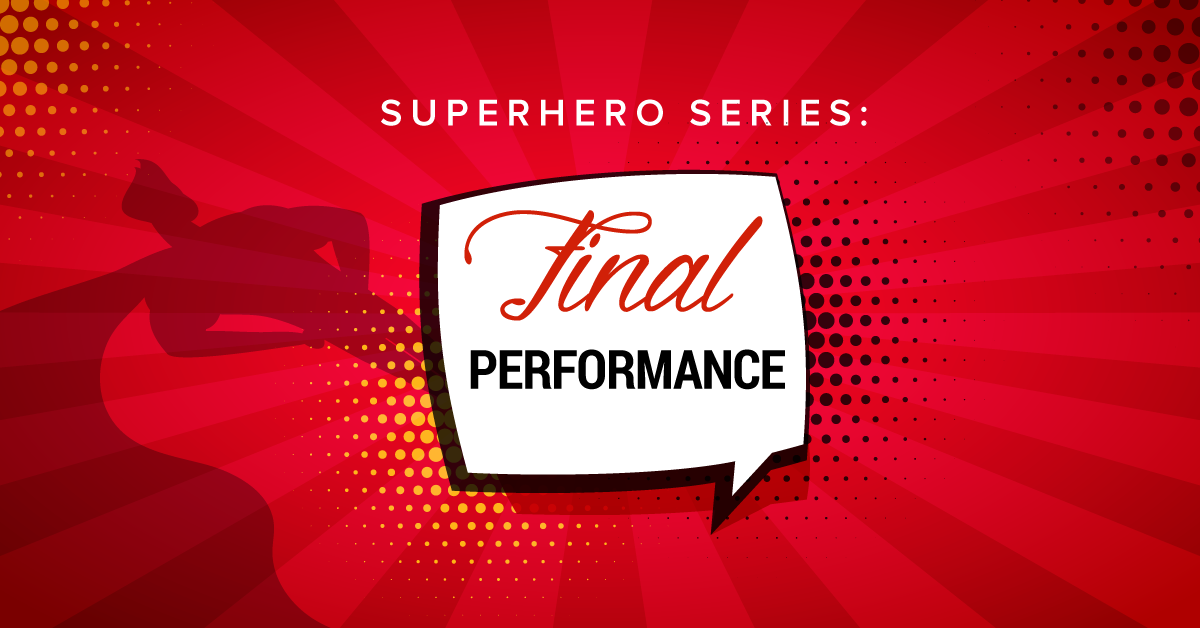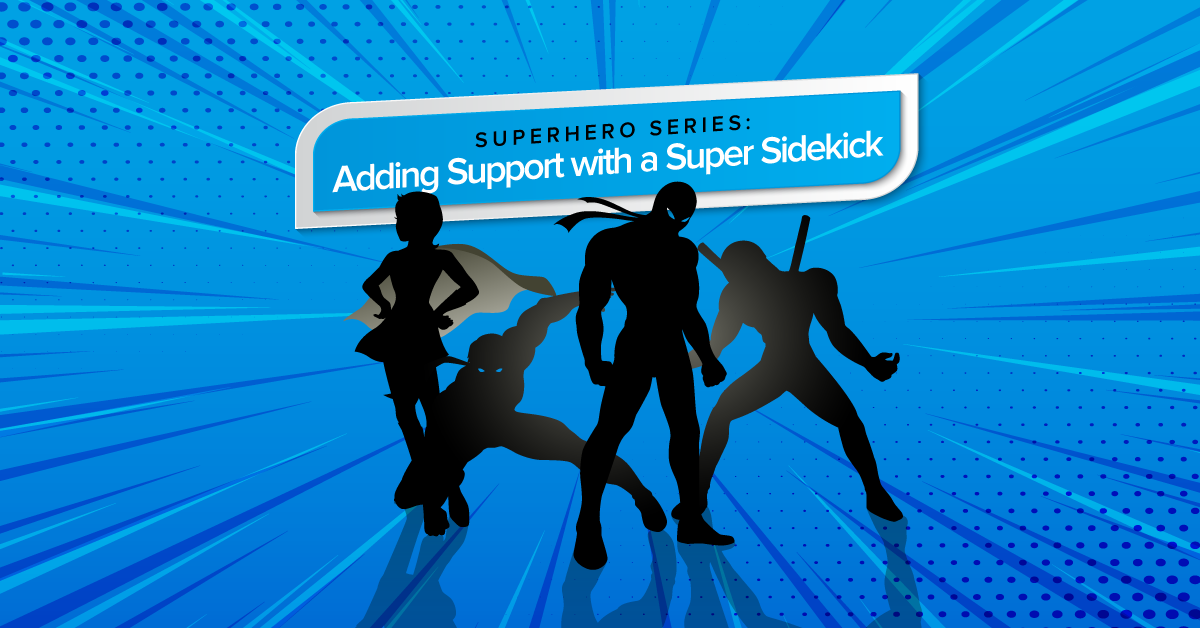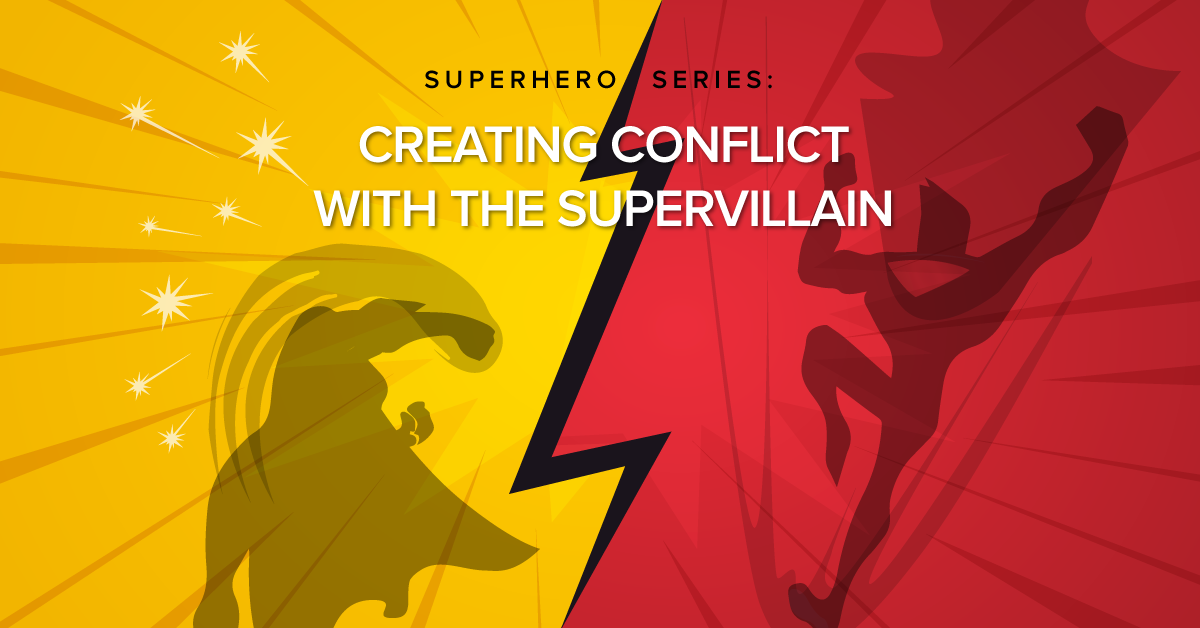There exists in everyone the potential for good or evil. Laramie Dean's adaptation of Dracula asks the question: How much would it take to bring out the darkness inside of you?
Superhero Series: Bringing Your Super World Together
Welcome to Part 4 of Theatrefolk’s Superhero Series. So far, your students have created their own original superheroes, super sidekicks, and supervillains. Now, we need to get those characters into some action!
There are many fun exercises that your students can do with these characters. Take any of the following suggestions and mix and match them to suit the needs of your class. The goal of these exercises is not to create a finished performance yet; rather, it is to help students create a deeper understanding of the characters they created and help them shape their characters into more defined, well-rounded, interesting personalities.
Writing Monologues
- Write a monologue for the superhero for one of the following situations:
- Putting clues together to figure out who the villain is
- Interrogating a criminal who refuses to answer
- Giving a speech to the public after making a daring rescue
- Explaining to their sidekick how they assumed their superhero persona (backstory)
- Write a monologue for the sidekick for one of the following situations:
- Convincing the superhero to take them on as a sidekick
- Convincing the superhero to let them help when the superhero doesn’t want them to
- Apologizing to the superhero for having to bail them out of a sticky situation
- Defending the superhero to a bystander (news reporter/police officer/angry mob)
- Write a monologue for the villain for one of the following situations:
- Explaining their dastardly crimes to an incapacitated superhero
- Giving a public speech — either as themselves or in their public identity. Are they trying to fool the audience into believing them, or threatening the public and creating fear?
- Recounting some of their best evil deeds to a minion or captive
- Admonishing a minion for messing up
Writing Scenes
- Write a one-page, two-person scene between two of the characters. How does the scene change depending on who is in the scene? (Hero and villain, hero and sidekick, or sidekick and villain?) Here are some prompts to try:
- Hero meeting the sidekick for the first time
- Hero being bested by the villain and the villain getting away
- Villain capturing the sidekick to use them as bait
- Hero and sidekick creating a plan to capture the villain
- Hero and sidekick disagreeing on what to do
- Villain taunting the hero while the hero is stuck in a trap
- Change the tone of the scene the student wrote. For example, try writing the scene as a comedy, an action sequence, a dark and gritty drama, or a horror scene. (Try showing clips of different Batman series as examples — compare and contrast the 1960s television series starring Adam West to the 1989 Batman film starring Michael Keaton and The Dark Knight series starring Christian Bale.)
- Write a scene featuring all three characters. Have other students read the scene aloud to see how it sounds. Do the characters each have unique, interesting voices, or do they all sound the same? Have students look at the “voice” of the written lines, rather than the performances of the other students. Challenge them to differentiate their writing tone.
Design (can be for one or all of the characters)
- Costumes: Create a logo or symbol for the character (like the Superman “S” or Captain America’s star).
- Costumes: Sketch and colour a costume for the character. Include notes such as a description of material/fabric requirements (e.g., flame-retardant, waterproof, etc.) and reasons for choice of colour scheme.
- Props: Design a special tool or weapon for the character (such as Batman’s utility belt or Wonder Woman’s lasso of truth).
- Set: Make a sketch of the superhero’s headquarters or the villain’s lair. Include details such as location, equipment, special features, and choice of furnishings.
- Sound: Choose a song that could be used as the character’s theme music. The James Bond movies are great examples of this; each movie features a unique song and musician but they all have a common theme and chord progression. Describe why that song (lyrics, tone, instrumentation, vocal quality, etc.) works well for the character. (If you have some musically inclined students, they may want to compose their own theme song for their character.)
Improv
- Have a student select one of their characters and answer questions from the rest of the class in character.
- Have two students each select one of their characters and have a conversation. How does the conversation differ depending on the combination of characters? (Two heroes, two sidekicks, two villains, a hero and a villain, a hero and a sidekick, or a sidekick and a villain?)
- Divide students into groups of four to five. Have all the students select one of their characters (all the same — all heroes, all villains, or all sidekicks) and improvise a scene in which they must come together for some reason (such as a group of heroes assembling to work together, like the Avengers).
These exercises will help your students explore and learn more about their characters while practicing many different theatrical skills. You can combine some of the exercises to create a longer project if you wish. Keep an eye out for our fifth and final installment of the Superhero Series: Final Performance.



